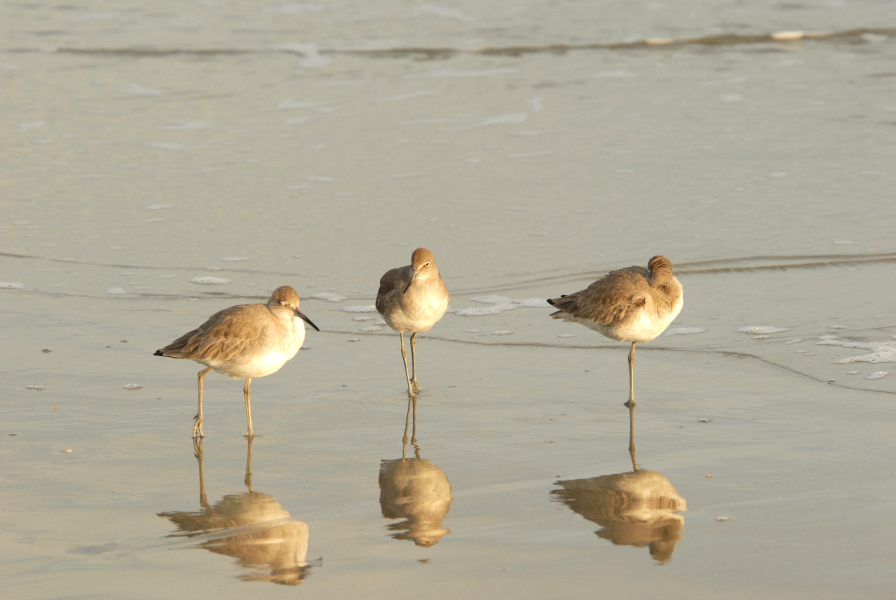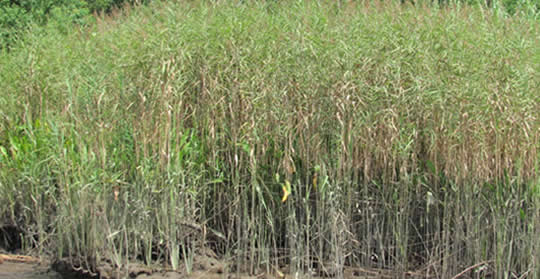Wildlife and Habitat Conservation Support
Our national wildlife refuges are dedicated to preserving the diversity of species that makes our world and our lives rich and interesting. With your generosity we are proudly supporting their efforts.
Loggerhead Sea Turtle Conservation:
 For ten years Friends of Coastal South Carolina has been supporting loggerhead sea turtle recovery efforts on Cape Romain National Wildlife Refuge by funding field technician positions during the nesting season, supporting predator control efforts and providing needed supplies and materials.
For ten years Friends of Coastal South Carolina has been supporting loggerhead sea turtle recovery efforts on Cape Romain National Wildlife Refuge by funding field technician positions during the nesting season, supporting predator control efforts and providing needed supplies and materials.
The work at Cape Romain is so important because while the refuge has only about 10% of the suitable nesting beaches in South Carolina it is home to about 35% of the nests laid in the state; making the refuge the most important breeding ground for loggerheads north of Florida.
During the 50 plus days of incubation turtle eggs are vulnerable to predators (like raccoons) and, because of beach erosion, to being washed over by high tides. This means sea turtle conservation must begin with protecting nests.
On Cape Romain this effort is nothing short of heroic. From late April to late August over 80 volunteers donate over 6,000 hours to the refuge’s nest protection and monitoring efforts. They are led by two full time field technicians and Cape Romain’s biologist. Seven days a week the work begins at dawn before most of us have even hit the snooze button for the first time. Crews work tirelessly to ensure every nest on the refuge has the best possible chance of producing hatchlings.
Each day every nesting beach is surveyed for new nests. Each new nest (and there can be up to 45 a day) is assessed and either protected in place with predator guards or relocated to a hatchery. Field techniques have been carefully developed over the years and they work. Seventy-five to 80 out of every 100 eggs survive to hatch. Studies have shown that without this work only about 23 out of every 100 eggs would survive to hatch.
The nests that are being protected today are producing the turtles that will return as breeding adults in 30 to 35 years. Because turtles mature so slowly, assessing population trends is a long term commitment. Loggerhead sea turtles were initially protected in 1978 and the efforts since that time seem to be paying off. Nesting numbers have steadily increased at Cape Romain over the last several years, peaking at a record 1,906 nests in 2013. Florida, Georgia and North Carolina also reported record high numbers of nests in 2013.
Today’s breeding adults may well be some of the first hatchlings to have benefited from population recovery efforts that began 35 years ago. Refuge manager Sarah Dawsey is quick to remind that many factors are at play and that although it seems likely that nest protection efforts are paying off only time will tell. She also adds that public education and protecting turtles while they are at sea are also critical components of the conservation effort.
Other important work is also taking place on Cape Romain’s beaches. Genetics research being conducted on the refuge in conjunction with the University of Georgia will allow researchers to track the nesting patterns of individual females and their offspring. Researchers will be able to identify a given female’s offspring and determine how close to her actual hatching site a daughter returns to lay her eggs. This is all accomplished by analyzing the DNA signature in the shell of a turtle’s egg, and will give valuable information as to how many turtles are actually nesting as well as where and when individual turtles are nesting. As sea levels rise and current nesting beaches continue to be lost to erosion, biologists will be faced with new and greater management challenges. The information gathered from this study will be critical in guiding their future efforts and assessing population trends. For more information on this important genetics research and more nesting statistics check out www.seaturtle.org.
The ongoing threats:
It is a perilous journey from egg to breeding adult sea turtle. Although nests are being protected and much has been done to make the open waters safer for turtles, boat traffic and commercial fishing are still threats. Pollutants in our waters, like plastic shopping bags which turtles and other wildlife mistake for food, cause fatalities.
Turtles are also threatened by coastal lighting, which disorients hatchlings, drawing them inland instead of toward the ocean. Those working on beaches around the world are learning that it is not only a single light directly on the beach that disorients, the glow from nearby cities and towns can be just as disruptive. As development moves north along Highway 17 Cape Romain will be impacted. It is up to us as citizens who value our natural resources to make our voices heard when development is discussed.
Shorebird Conservation:
 Friends of Coastal South Carolina works with Cape Romain National Wildlife Refuge to obtain and manage funding to conduct shorebird conservation field work on the refuge, including predator control efforts and regular shorebird surveys. The surveys are especially important because monitoring shorebird population trends is a critical component of conservation efforts. Many of the species monitored are in rapid decline and the data collected on the refuge is critical to the refuge and many other agencies and individuals working both locally and globally on shorebird conservation.
Friends of Coastal South Carolina works with Cape Romain National Wildlife Refuge to obtain and manage funding to conduct shorebird conservation field work on the refuge, including predator control efforts and regular shorebird surveys. The surveys are especially important because monitoring shorebird population trends is a critical component of conservation efforts. Many of the species monitored are in rapid decline and the data collected on the refuge is critical to the refuge and many other agencies and individuals working both locally and globally on shorebird conservation.
Although Cape Romain encompasses only 10% of South Carolina’s coast, the refuge supports the majority of shorebirds and seabirds in the state. Wilson’s plovers, piping plovers, American oystercatchers, willets, marbled godwits, black-necked stilts, long-billed curlews, shortbilled dowitchers, red knots and whimbrel are a few of the species of conservation concern that depend on the refuge’s resources for survival.
Battling Invasive Species:

Have you seen this plant?
Invasive species are recognized as one of the leading threats to biodiversity and impose enormous costs to agriculture, forestry and fisheries. We have partnered with our national forest and wildlife refuges on many projects to eradicate invasive species through the years and we continue to do so.
Our Support:
We are currently in the second year of a project partnering with Waccamaw National Wildlife Refuge to control feral hog populations on the refuge. This year we began working with ACE Basin National Wildlife Refuge on a project to eradicate an invasive reed called phragmites (Phragmites australis) from the basin.
Phragmites in the ACE Basin: The wetlands of the ACE Basin are critical wintering habitat for approximately 50,000 ducks, geese and swans each year including as many as 25 different species. These critical wetlands are currently being threatened by an invasive reed. Introduced phragmites is a vigorous plant that, once established, rapidly takes over, creating dense patches that consume available growing space and push out other plants. Phragmites threatens native plants that ducks and geese depend on for food and can alter the hydrology of critical wetlands. In the ACE Basin the presence of phragmites is still at a level that makes eradication possible. Along with the Friends of Coastal South Carolina, the ACE Basin Task Force has established a special “Invasive Species Strike Team” that is organizing and consolidating invasive species education, control measures and funding sources among its many partners. Plant locations are currently being mapped and assessed for appropriate types and application methods of herbicides, with some treatment measures already commenced.
Citizen participation in the effort to map phragmites is critical. To report locations of phragmites in the ACE Basin contact: Jason Ayres at jason_ayers@fws.gov, 843-300-0421
